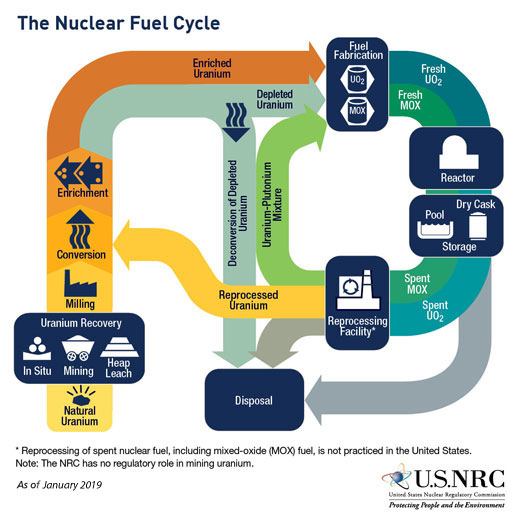Stages of the Nuclear Fuel Cycle
The nuclear fuel cycle represents the progression of nuclear fuel from creation to disposal. In the United States, uranium is processed in different chemical and physical forms to create nuclear fuel. Mixed oxide is another type of nuclear fuel. As illustrated below, the nuclear fuel cycle typically includes the following stages:
- Uranium recovery to extract (or mine) uranium ore, and concentrate (or mill) the ore to produce a uranium ore concentrate, sometimes called U3O8 or "yellowcake"
- Conversion of uranium ore concentrate into uranium hexafluoride (UF6)
- Enrichment to increase the concentration of uranium-235 (U235) in UF6
- Deconversion to reduce the hazards associated with the depleted uranium hexafluoride (DUF6), or "tailings," produced in earlier stages of the fuel cycle
- Fuel fabrication to convert natural and enriched UF6 into UO2 or uranium metal alloys for use as fuel for nuclear reactors. This step also includes mixed oxide fuel fabrication.
- Use of the fuel in reactors (nuclear power, research, or naval propulsion)
- Interim storage of spent nuclear fuel
- Reprocessing (or recycling) of high-level waste (currently not done commercially in the U.S.)[1]
- Final disposition (disposal) of used fuel or high-level waste

[1] No recycling or reprocessing facility or a Federal waste repository is currently licensed in the United States, and spent fuel is in interim storage.
Page Last Reviewed/Updated Wednesday, December 02, 2020
Page Last Reviewed/Updated Wednesday, December 02, 2020


